Don't wanna be here? Send us removal request.
Text
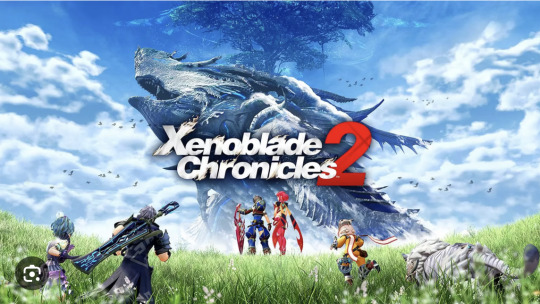
Xenoblade Chronicles 2
This game definitely got a very interesting plot setting of all the games that I have seen before. The world of Xenoblade 2 is built on the backs of gigantic living Titans and just like real ecosystems, these Titans are not immortal. They grow old, they weaken, and eventually, they die. It’s a constant reminder that even the most grand and awe-inspiring parts of nature aren’t invincible. Watching entire civilizations crumble along with the Titans they relied on really drove home just how much humans depend on nature and how fragile that relationship is, this game really seems like the perfect next step from watching the movie Nausicaä of the Valley of the Wind from last class.
The relationship between Blades and Drivers also feels like a metaphor for how we interact with nature. Blades are these powerful, living beings gifted to humanity, and ideally, they should be treated as partners. But more often than not, people in the game treat them like tools, discarding them when they're no longer “useful.” It reminds me a lot of how we treat natural resources in real life, as something to be used up, rather than respected.
One part of the story that really left an impression on me was the journey to the World Tree. All throughout the game, Elysium is portrayed as a promised land, a place where humanity can live in peace and abundance again. But when Rex and his friends finally reach it, they find it abandoned and desolate. It’s a stark moment that feels painfully real, the paradise we dream about isn’t something we can just return to. Once it's gone, it's gone. And what’s left is the responsibility to rebuild, with care and understanding, instead of the mistakes that led to ruin in the first place.
Thinking about it, Xenoblade 2 feels incredibly relevant today. We live in a world where climate change is becoming harder and harder to ignore, where the consequences of short-sightedness are no longer distant threats, but realities we are already facing. In the game, the old world had already been destroyed once, by humanity's own hands. Alrest was their second chance. And by the end of the story, after everything collapses again, a new land is formed, offering yet another chance, but only if people learn to coexist with nature rather than trying to dominate it.
0 notes
Text
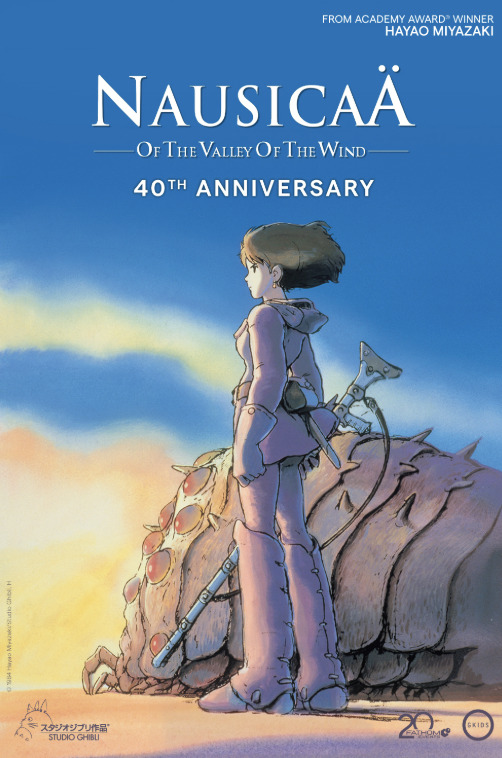
Nausicaä of the Valley of the Wind
Another classic from Miyazaki. It’s incredible that, watching it for the second time, years after first seeing it back in primary school, I was able to take away so much more from the story. When I first watched it, I was mostly fascinated by the creativity behind all the flying machines and fantastical aircraft. This time, however, I found myself much more attuned to the deeper plot and themes.
It's clearer than ever that the main theme of the movie is about respecting nature — all parts of it, from bugs to wild animals. The movie paints a dystopian future where, due to human excavation and pollution, the earth has become largely uninhabitable. The few small colonies of human civilization that remain are forced to rely on nature after the collapse of modern technologies. In this world, humans are no longer able to dominate nature; they can only coexist with it.
I think Nausicaä offers a powerful and unique perspective, asking audiences to reflect on our relationship with the natural world. We often believe that with advanced technologies, humans can manipulate nature, and to an extent, that’s true. We can drill thousands of miles underground to extract oil, or build massive dams to harvest electricity from rivers and oceans. But what we don’t often realize is how small and powerless we actually are in the face of Mother Nature. Just look at the wildfires raging across the world earlier this year, or the worsening impacts of climate change. It’s incredible that this decades-old movie still feels so relevant today, reminding us that nature is not something to conquer, but something to respect.
One scene that left a huge impression on me was when Nausicaä and the princess from the empire were stranded deep in the Sea of Corruption, the toxic jungle inhabited by giant insects (like the Ohmu). Even in that moment of shared danger, the imperial princess still tried to threaten Nausicaä at gunpoint, demanding obedience out of fear and insecurity.
This moment feels like a direct reflection of the real world today, where many in positions of power, instead of working to build a relationship with nature, continue trying to control it out of fear, pride, or short-sightedness.
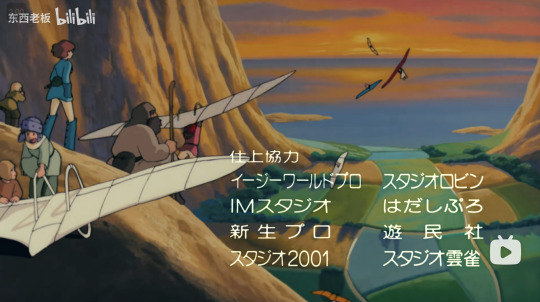
Finally, I loved the ending scenes during the credits, where you see the children of the Valley of the Wind, following in their princess's footsteps, practicing flying with their little winged aircrafts. To me, this symbolizes hope: people reconnecting with nature, finding joy in it, and learning to live alongside it, rather than against it. I believe this is the lasting takeaway everyone should feel after watching Nausicaä of the Valley of the Wind.
0 notes
Text
Hey, I really enjoyed reading your thoughts on Wandering Son. I especially liked how you pointed out the contrast between the characters’ inner journeys and the rigid social expectations they’re up against, it really highlights how hard it is just to be seen as yourself. I also totally agree how institutional structures like school activities can unintentionally reinforce gender norms.
Got a question for you. Do you think shows like this are enough to shift people’s understanding, or do they mostly speak to those who already empathize?
Wondering Son
The anime Wandering Son provided a gentle, authentic depiction of gender identity and self-exploration from the perspectives of younger people. Concentrating mainly on episodes 1, 7, 9, and 10, because that was the assigned episodes, the series highlights worldwide concerns like gender dysphoria, social norms, and the emotional impact of existing in a society that finds it difficult to accept diversity. In episode 1 Shuichi Nitori, a transgender girl, and Yoshino Takatsuki, a transgender boy, are introduced and we see as they navigate their feelings of gender discord in a society that perceives them differently. Their experiences reflect the worldwide issues confronted by transgender youth: apprehension of being rejected, insufficient representation, and the battle to secure safe environments for self-expression. In episode 7, the characters deal with complicated feelings regarding school activities, like gendered play, which forced them to take on roles that clash with their identities. This episode strongly illustrated how institutional frameworks frequently do not support or honor gender diversity. Episodes 9 and 10 delve deeper into the challenges of conforming and losing one's identity. Shuichi's wish to don the girls’ uniform at school, facing misunderstanding and opposition, highlights the insufficient comprehension and backing for transgender youth within educational systems, a truth in across the world. At the same time, Yoshino starts to challenge societal norms, emphasizing the subtle courage needed to express one's truth. I think what gives Wandering Son a global appeal is its empathetic, layered perspective. Instead of exaggerating or politicizing trans experiences, it brings a human touch, providing viewers insight into the quiet struggles many endure. By doing this, the anime promotes empathy, comprehension, and conversation about gender identity, essential measures for fostering a more inclusive society. In the end, Wandering Son transcends a typical coming-of-age story, it serves as an almost begging for acceptance in a society that is still figuring out how to recognize, understand, and respect individuals for their true selves.
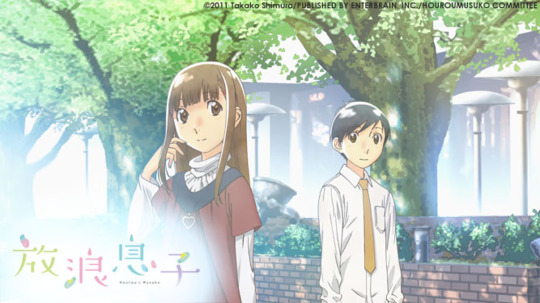
1 note
·
View note
Text
Hey, I really liked your take, especially how you described the movie as just turning everything up emotionally and existentially. That felt super accurate. The way you broke down how the characters shift in and out of their “roles” really clicked for me too, especially with Shinji. It’s like he’s stuck trying on masks that don’t fit anymore. I hadn’t thought about how the second half basically erases the line between self and others and what that says about identity being performative. That part really got me thinking. Do you think the movie sees that collapse as a tragedy, or more like a necessary step toward something new?
Evangelion: The End of Evangelion
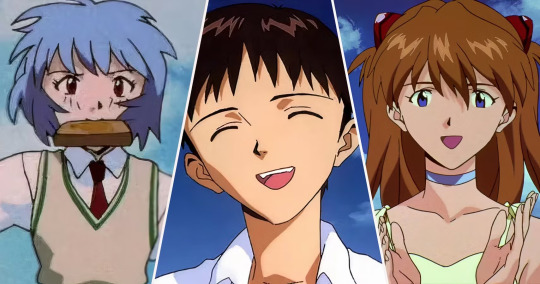
This movie really said “What if we took everything we were doing before and made it louder?” Emotionally, visually, existentially—it just cranks it all up.
What stands out the most is how the characters don’t just perform gender roles anymore—they get confronted with the consequences of those performances falling apart.
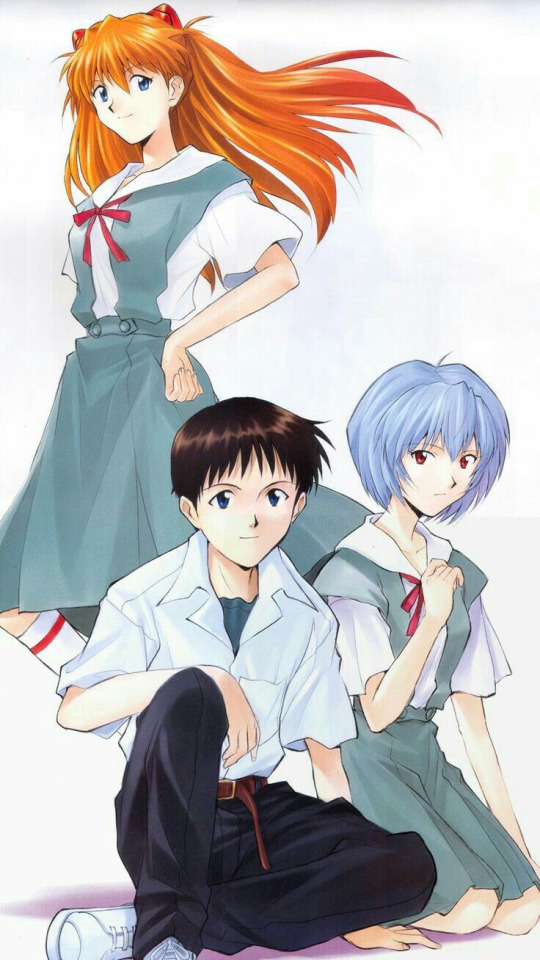
Shinji’s behavior throughout feels like a person who’s completely shut down and doesn’t know how to act anymore, but is still being asked to make huge decisions. A lot of the movie is him bouncing between roles he’s worn before: the scared kid, the passive observer, the person trying to be “strong,” whatever that means. None of them really stick.
Asuka has this explosive moment of return where she just snaps, fully stepping into the pilot role again, and it feels like the first time in a while where someone’s claiming agency. But it’s also really raw, and kind of tragic, since the world around her is collapsing anyway.
The second half gets very abstract, but what’s clear is that the boundary between self and others stops existing. And when that happens, all the things people were performing—gender, strength, individuality, control—just sort of dissolve. There’s this sense that identity was always conditional, shaped by how others perceived you, and now that’s gone, and the movie’s like: “Okay… now what?”
Does it resolve the story? Technically. But in practice it’s like being handed a puzzle with no picture on the box and two pieces missing. It ends—but good luck figuring out what that means.
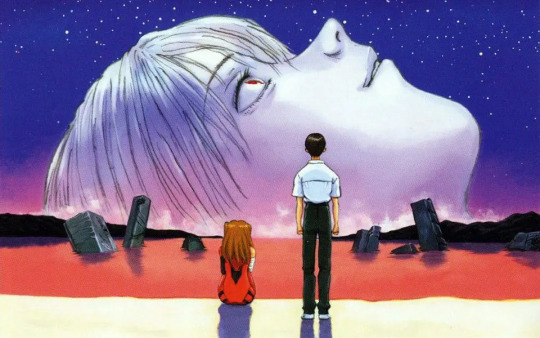
1 note
·
View note
Text
Hey, I really liked your detailed analysis! especially the comparison between Kushana and Nausicaa. I thought it was very insightful how you mentioned they each represent different responses to fear and the unknown, and how that shapes the world around them. I hadn’t fully picked up on the irony you mentioned, how Nausicaa understands the world better than anyone but doesn’t actually have the power to change it in the way others can, good point. Got a question for you, do you think the film is suggesting that understanding alone isn't enough without power, or that maybe it is enough in a quieter, long-term way?
Nausicaä of the Valley of the Wind
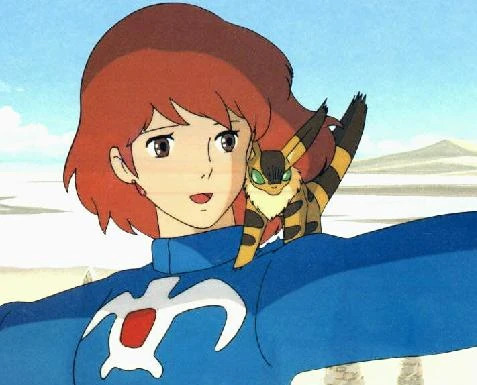
Another Ghibli film, so I knew I was gonna be interested in the happenings and appearance of the film. Here we watched the people of The Valley of Wind resist the conflicts they were brought into. I liked this film a lot, but this class isn't about just acknowledging great anime, its about the analysis.
There wasn't a reading for this, so I'm gonna try and find what I think it was about, and I think this movie is about the tragic irony of human nature. (At a societal scale, not just individuals.) It explores this idea with Nauisca and Kushana (Princess of Torumekia).
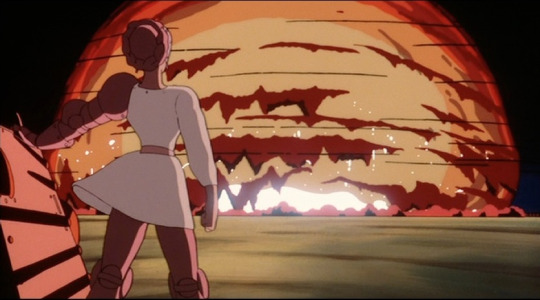
Kushana represents the tendency for people to fear the unknown/what is different and lead with & sensationalize hate. She plans to use old technology to eradicate the sea of decay altogether, insisting it was the necessary change. However it is clear that she truly only wants the power that comes with controlling the giant warrior. She used violence to attain her goals, and ultimately, failed because all she did in this film is create more enemies out of everyone who wasn't "her people." So despite her intention of creating world peace and bringing back what was lost, she only created enemies for herself, which only invites conflict. This is without even mentioning that she had 0 clue what the sea of decay even was, and if she did, she would know that destroying it wouldn't really fix anything, you'd just make more desert, but also you would destroy the last thing keeping earth in any sort of ecological equilibrium.
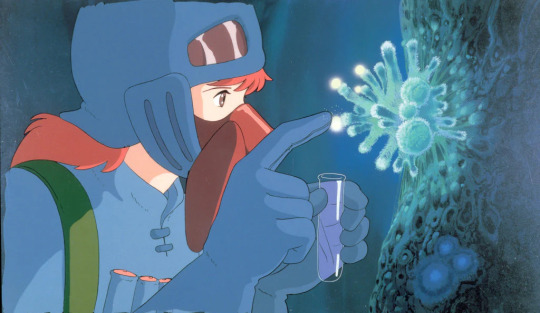
Nauisca represents a foil to Kushana in that she represents curiosity and acceptance. She sought to understand the sea of decay and the insects, through that she learned that the fauna in the sea of decay actually act as purifiers, cleaning the surface level pollution and leaving clean product below and that the insects are protecting the sea of decay from humans. To attain her goal, which was end the conflict in the valley, she used communication nearly exclusively, with humans and the ohm. You may see a lack of irony there, but its because it's in the subtext: Nauisca actually wants to save the world, not through some drastic action, but by understanding and accepting the world as it is. Not aiming for what we had a thousand years ago, because there's a reason it changed. The irony being that she doesn't hold the power to do truly act on it.
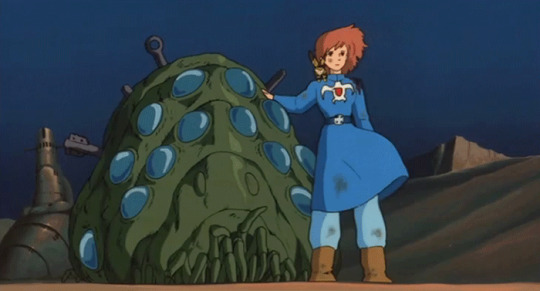
A bit too obvious for me to want to make the whole post about, but this movie is also a green PSA. The main issue bringing everyone to action is the issue of the sea of decay and the bugs, but all of that was caused by human disregard for the environment, which forced nature to "counterattack" by destroying everything.
3 notes
·
View notes
Text
Hey, I really enjoyed your breakdown of Xenoblade Chronicles 2. You made such a good point about how the game doesn’t just use the environment as a setting, but actually makes it part of the crisis. I hadn’t thought about how Rex’s hope for Elysium reflects our own tendency to look for escape instead of facing climate reality head-on. Nice comparison. Do you think the game is ultimately hopeful about rewriting the future, or more cynical about where things are heading?
Xenoblade Chronicles 2
Xenoblade Chronicles 2 is dense with lore and character arcs, but at its core, it’s a world shaped by ecological collapse and desperate survival, exactly the kind of stage Cobb refers to in “Drama of the Anthropocene.” The game doesn’t present the environment as a backdrop, but as a living crisis. Humanity floats on the backs of Titans, creatures that are literally dying beneath them, and everyone’s scrambling for a place to stand.
Cobb talks about the Anthropocene as a shift in how we see human agency and responsibility. Xenoblade leans into this through its characters. Rex wants to “reach Elysium,” but he’s not a hero saving nature, he’s someone clinging to a myth because the alternative is hopelessness. That mirrors real-world attitudes toward climate collapse, we dream of escape rather than change.
The game also dramatizes this idea of inherited damage. The people in Xenoblade live in a world already broken by decisions they didn’t make. There’s no going back, only surviving forward. Cobb writes about the need for new narratives, and that’s what this game wrestles with, whether survival means clinging to old stories or rewriting them entirely.

4 notes
·
View notes
Text
I thought your take on Hetalia was really interesting. I liked how you pointed out the tension between making something fun and accessible while still being mindful of the serious history behind it. The part about the characters leaning into national stereotypes really stood out to me, it's something that's easy to overlook when you're just focused on the comedy.
At the same time, I can see how it might help younger viewers get curious about world history, especially if they’ve mostly learned it from a single-country perspective. Do you think it’s possible for a show like this to strike a better balance between humor and historical nuance, or is that kind of the trade-off with this format?
Hetalia Axis powers
The show is mainly about countries turned into humans interacting with each other. And judging by the title it is mainly about the Axis powers during WW2. WW2 is a very dark history for countries such as Germany, Italy, and Japan who lost the war and eventually were villainized in the eyes of the victors such as United States. It feels like it undermines the severity of the actions during WW2 by making silly depictions of each countries. The depiction of each character also enforces the stereotypes of each countries which is mostly a downside.
But it also makes history more accessible and encourage interest in global culture throughout depicting complicated political situation. It targets more younger audiences who are most likely emphasized Japanese history over world history and helps them widen their world view.
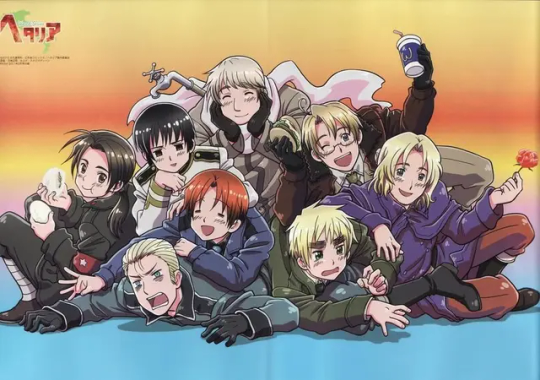
2 notes
·
View notes
Text
Hey, I really liked reading your reflection! I totally agree that Your Name felt like such a beautiful piece of art. The way it connects past and present through both the story and visuals was really moving, literally every frame is wallpaper quality. I thought the point you mentioned how the characters' personalities stayed consistent even through the body switched is very true.
I got a question for you. Do you think the movie is more about honoring tradition or its advocating for finding your own path despite it?
Your Name
This was a really beautiful piece of art to watch. The animation and the story was really beautiful. It reminded me that we are all connected, past and present. I also loved that they showcased gender expression when they would switch bodies. For instance, when Taki would switch into Mitsuha’s body, he would squeeze her breasts and when Mitsuha would switch into Taki’s body, she would act more feminine and initially used feminine pronouns when referring to herself as well as use emojis throughout her notes. I think keeping the person’s personality and actions the same even when they switched bodies made the characters feel more humanistic. Also, it was interesting to see a portrayal of how Mitsuha was pushed into becoming a shrine maiden because of her family. Since she comes from a long line of shrine maidens and priestesses, she has to keep the tradition going, even if she gets ridiculed by younger folks who do not follow Shintoism. This reminds me of people who are forced into a religion because their parents practice it. Specifically in Catholicism, growing up in it often leads to something called “Catholic guilt,” which is a sort of an exaggerated or irrational sense of guilt that’s typically felt by practitioners. Anyway, I am glad that she follows and honors her family’s traditions. Even though there are times when she hates it, e.g. after performing a ritual to make kuchikamisake in front of her classmates, she still honors and practices tradition and even makes the trek to the Shrine of the Body with her grandmother on her back to offer up the kuchikamisake that she made. Overall, it was a really beautiful anime to watch, and gave me hope that I will meet someone that I may have known in another life.
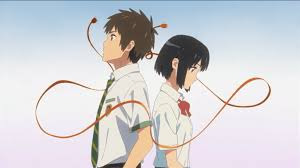
4 notes
·
View notes
Text
Hey, I really enjoyed reading your thoughts on Akira! The anime really gives off that chaotic, intense vibe of Neo-Tokyo pulling audiences in with that raw energy.
I hadn’t thought about how Tetsuo’s breakdown was not just tragic, but a warning about what happens when power comes before emotional readiness, that idea really stuck with me! And your point about how youth are mistreated in this world made me think about how systems often fail the very people they claim to protect.
Do you think Akira is ultimately hopeful about the next generation, or does it believe the cycle will just repeat?
Akira
I felt like this anime was different from anything we have watched. It has a heavy atmosphere, a messy world, and a tone that never really tries to comfort the audience. The story builds fast, but it does not explain everything. You just get thrown into the chaos of Neo-Tokyo, and somehow it works. What stood out to me first was the way power is treated in this anime. Tetsuo goes from being weak and insecure to gaining power so intense that it completely breaks him. His transformation is scary but also kind of tragic. He has always felt small and ignored, so once he gets this power, he refuses to let anyone control him again. The problem is that he does not know how to use it. Instead of becoming free, he becomes something uncontrollable. The anime shows that power without emotional maturity only leads to destruction. Another strong theme is how this world treats youth. The government experiments on kids. The police beat teenagers in the street. Adults either try to control or ignore them. Everything feels broken, and the younger generation is left to deal with it. This connects to real concerns about authority, especially in how the system reacts with fear and violence instead of care. Kaneda’s group is reckless, but they are just trying to survive in a world that already gave up on them. There is also something about memory and trauma running under the surface. Neo-Tokyo was built on the ruins of disaster. Everyone is pretending like life moved on, but the cracks are everywhere. The city looks advanced, but it is also filled with poverty, protests, and corruption. Tetsuo’s powers feel like the return of a buried trauma that was never actually healed. The animation is intense. Every frame feels alive. The city looks gritty and real, but the psychic scenes are surreal and disturbing. I can see why this anime had such a big influence on later works. It is not just about style. It is about fear, collapse, and what might rise after everything falls apart.
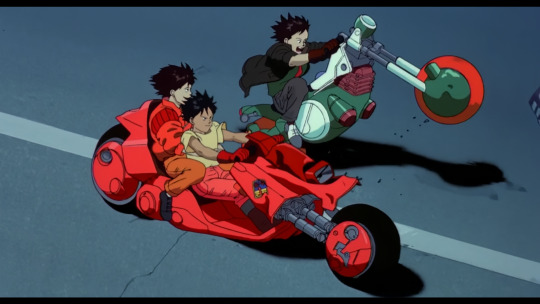
6 notes
·
View notes
Text
Hey, I really liked your take here! You brought up some great points about its deeper themes, and I especially like how you connected the brothers' story to myths like Sisyphus and Orpheus. Your question about the moral boundary of bringing someone back from the dead really made me think. It’s so true that across cultures and stories, crossing that line often ends in tragedy. And yeah, the episode with the girl and her dog is the one that sticks with everyone, how scientific ambition without empathy can lead to horrific tragedy.
FMA brotherhood
Fullmetal alchemist is an incredibly popular anime and I believe it was number 1 rated anime on myanimelist for a significant period of time until recently Frieren broke its streak. Both are legendary animes in their own respective.
Fullmetal Alchemist: Brotherhood goes through many significant ethical and philosophical themes throughout the show. Also, like the name suggests, it focuses on the bonds between characters and specifically the brotherhood between Edward and Alphonse. The most interesting aspect of the plot is how the brothers tried to resurrect their mother from the dead and royally screwed up in doing so. There are many tales in mythology that tell the tale of people trying to escape death. There is the tale of Sisyphus, who escapes from death and hides from death, however, he is met with karma in the end by his eternal punishment of rolling the boulder up the hill. There is also Orpheus and Eurydice. Orpheus travels to the underworld to revive his wife and is eventually met with his fate. In Fullmetal Alchemist: Brotherhood, Edward and Alphonse pay the price with their bodies. Alphonse loses his entire body, and Edward loses his arm. In the event that it is possible to revive people from the dead, what would be the moral boundary that is crossed by doing so? Why are there so many tales and stories on why the resurrection of a person is wrong? It's definitely an interesting thing to think about.
There is also the episode that I personally wanted to mention about the girl and her dog. It is an infamous episode where a father fuses his own daughter and dog into a homunculus. It is widely regarded as one of the most disturbing parts of the anime. It definitely warns against passing the boundaries of biological science.
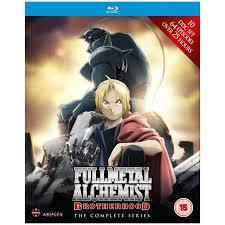
1 note
·
View note
Text
Hey, I really enjoyed reading your reflection on the anime! I thought it was interesting how you pointed out that even people who aren't typically into anime still tend to enjoy this show, and it's so true. There’s something about its tone and the moral ambiguity that makes it really accessible across different audiences. I also really aligned with your take on the theme of justice and how it intertwines with power. The idea that justice is shaped, and sometimes warped, by those in control really stuck with me. And your point about Light losing his morality in pursuit of power definitely made me think about real-world figures who follow that same pattern. It’s wild how a fictional story can reflect societal truths so closely.
Death Note
Death Note is a very popular anime within popular culture and current society. This anime is one of the few that I have personally seen, and I know a lot of people who have watched it. In my opinion, this anime is one of the ones that even those who do not enjoy anime or appreciate its culture tend to enjoy in their own lives. I think it is so popular because it provides individuals with a nuanced analysis of universal themes that are relevant in modern society.
One of the most important themes that I noticed was the theme of justice. The anime begins with the main character intending to harm only those who have harmed others deeply in the past. However, it slowly progresses to being uncontrollable harm. I think this is socially relevant to current society because it reflects how evil is hidden around us everywhere. Justice is a very touchy subject because when you discuss justice, you must also immediately discuss power. Justice is fueled by those who are in power, and power can alter the justice system within society. This means that those who are in a lust for power often do not face consequences because they are the ones controlling the justice system.
Another theme that I think is extremely socially relevant is the concept that individuals lose their morality to gain power. This is shown within Light as he is completely obsessed with gaining power, so much so that he loses his sense of personal moral values. He is completely focused on power and his form of justice, and does not care about those around him. He becomes completely power hungry, which is important to reflect on because it is extremely common in our current society. Often, those who acquire power begin to feel a lust for it at the sacrifice of others and moral values.

1 note
·
View note
Text
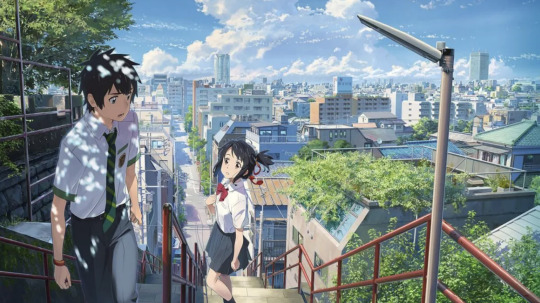
Your Name
Your Name, what an icon. I first saw the movie during its initial release in 2016, and I instantly fell in love with its plot. The desire to be able to sing that unforgettable theme song, Zenzenzense, was actually what inspired me to start learning Japanese. The film is incredibly moving, with a beautifully crafted narrative that explores the idea of switching bodies and consciousness across time and space. Its approach to romance is subtle, heartfelt, and refreshingly non-erotic, focusing instead on emotional connection and empathy between the characters.
Linking back to the theme of nature and human activity that we’ve been discussing, Your Name presents a powerful narrative where personal actions play a crucial role in altering natural outcomes. One of the most compelling parts of the movie is when Taki, after realizing the town Mitsuha lives in is destroyed by a meteorite, travels to the shrine on top of the mountain to reconnect with her through the ritual sake she left behind. This act symbolizes not just love and longing, but an individual’s determination to rewrite fate. His decision leads to a critical turning point in the story where Mitsuha is able to warn and evacuate the townspeople, ultimately preventing the disaster.
The film also draws deeply from Japanese cultural and spiritual traditions, particularly Shintoism. In Shinto belief, the “Kami” are spiritual beings that reside in natural elements such as trees, rivers, and mountains. This idea is beautifully woven into the film’s setting and storyline. The sacred shrine in the mountains, for example, represents a space where the human and spiritual worlds meet. When Taki drinks the kuchikamizake, the rice wine that Mitsuha created through a traditional ritual, it enables him to connect with her across time. That moment, I believe made a great connection between Shinto’s reverence for nature and the spiritual connections between people.
Another example is the twilight scene, which was the moment when the world becomes blurred between day and night. It is during this brief and magical time that Taki and Mitsuha are finally able to see and speak to each other in person. The film’s use of this moment is not only visually stunning, but also deeply symbolic, emphasizing the importance of timing, memory, and spiritual resonance.
1 note
·
View note
Text
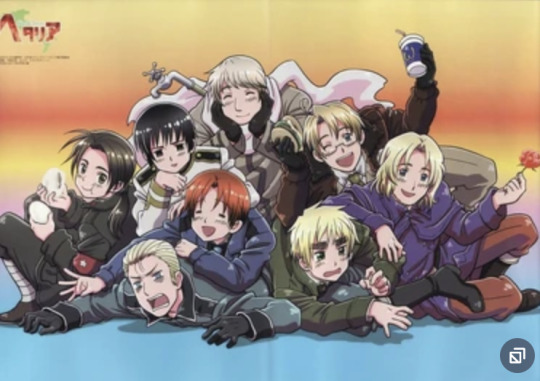
Hetalia: Axis Powers
Hetalia: Axis Powers is definitely one of the most unique anime I have ever seen. It is almost absurd in how random it feels at times. The way characters are designed, such as Italy, who is both adorable and the most carefree of all the countries, naturally raises the question of whether this anime is trying to reflect historical facts or should be viewed purely as an artistic creation and interpretation.
It was fascinating to go through each very short episode and watch pieces of relatively historically accurate, event-based stories performed by personified characters speaking in Japanese. Relating this to the reading by Annett, "World Conflict", it is especially interesting how the anime attracted a mostly female audience. The premiere of its movie in Japan was reportedly packed with female fans. As I watched the anime, I kept wondering what aspects of it appealed to that demographic. One possible reason, I believe, is the use of moe elements. Think about it. How could an anime represent a country without referencing stereotypical elements, whether those are positive or negative? I think that is exactly what happened in the movie, with characters dressing in stereotypical outfits that quickly triggered associations with their respective countries. For example, Germany is portrayed in a way that reflects its international image of being calm and reliable.
Personally, watching the anime while thinking about historical events was almost uncomfortable. The anime presents real historical moments with such a light tone that it sometimes felt inappropriate. Some references are indeed funny. For example, when China teaches young Japan how to write using Chinese characters, Japan ends up creating his own system that looks similar but is different. It is a fun and accurate spin on history. However, there were also parts that felt less enjoyable. One scene shows China raising young Japan and telling him under the full moon that he wants to become stronger to face future challenges from the West. This moment becomes incredibly dark when you connect it with what happened in real life. Japan’s quest for power led to the invasion and partial conquest of China, including atrocities like the Nanjing Massacre. It is moments like these that made the anime’s lighthearted tone feel less appropriate.
Overall, I think the anime was a success and has elements that are very appealing to its audience, as shown by its global box office performance. I was surprised that, even though I personally found some of the stories to oversimplify history, many comments on Chinese media platforms were quite supportive. People expressed that while the anime may not be the most historically accurate, they did not take offense. Instead, they appreciated it as a cute and entertaining artistic piece.
0 notes
Text
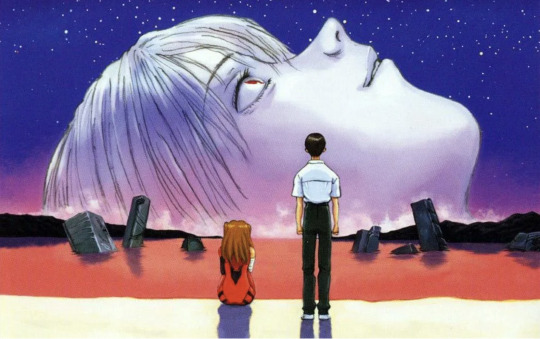
End of Evangelion
After watching The End of Evangelion, I found that while there were many conflicting character portrayals, which led to confusion, I appreciated the final message of the anime. Shinji ultimately chose individuality over instrumentality. Although this means he now has to return to facing the judgment of others, he also restores individual differences to people. That’s what makes life unique and meaningful.
There were definitely scenes where hegemonic masculinity and queer masculinity were portrayed. For example, in the beginning, in front of the dying Asuka’s hospital bed, Shinji, on the verge of an emotional breakdown, masturbates. Initially, I was extremely confused by his behavior. However, it makes sense when seen as a coping mechanism. When expressing his identity through queer masculinity failed him, his frustration led him to the alternative: objectifying Asuka and attempting to find comfort in hegemonic masculine behavior. Would that make him feel better? That was probably the reason he did it, but it didn’t.
In the final scene, where Shinji brings everyone back and ends up lying on the shore next to Asuka, his attempt to strangle her still leaves me confused. I think the reason it is so unsettling is that, throughout the anime, Shinji is torn between hegemonic masculinity and queer masculinity. In the end, the act of strangling Asuka could mean many things. Maybe it's his anger at himself or the people around him, a way to vent frustration over everything that has happened. It must have been overwhelming. Or perhaps it is a twisted expression of gratitude, so intense that it comes out in an extreme and confusing way.
0 notes
Text
Hey, I really enjoyed reading your response, I thought I was interesting how you pointed out that the tension between Asuka it's caused by Shuji not conforming to a typical muscular gender role. And for Kaworu, it was definitely wierd seeing his closeness and carefree attitude to gnder roles and social expectations, and relating it to the theme of masculitinity made everything make sense.
Evangelion (Ep. 8, 16, 24, 26)
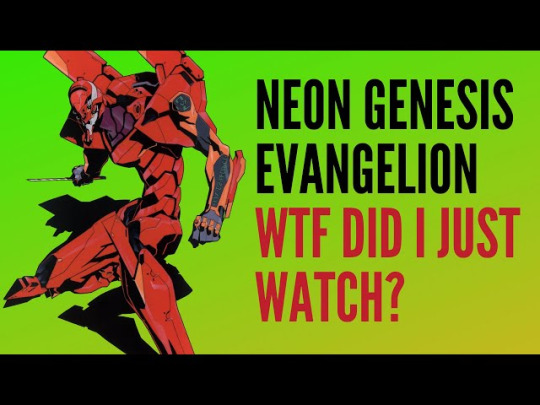
Since we skipped around, watching this slightly sped up was incredibly hilarious, especially episode 24. (I'm certain this clashes with the tone they were going for.)
Anyway there are two characters that interact with Shinji in the realm of masculinity in these episodes, "I'm an anime girl from 1996" Asuka and Kaworu.
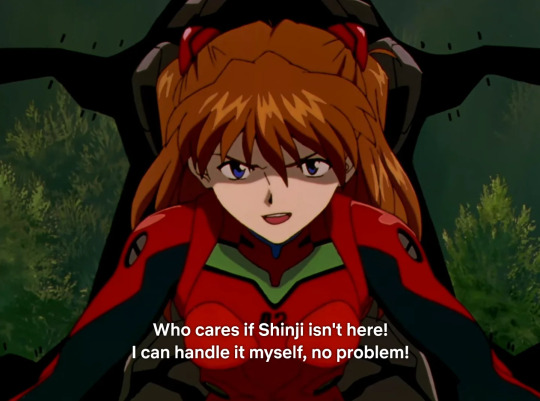
Starting with Asuka, she brings back the missing teenage girl archetype to the show, and along with it the ignorance of one. The moment she shows up we get the "where are you looking" scene, multiple "what are you touching" scenes, the whole shabang. But how does this relate to masculinity? Well it has to do with Asuka's expectations of how boys her age behave, and how Shinji not being what she expected affects their relationship.
After they first meet, Asuka tries to pull her generic teenage anime girl stuff but is not being engaged with in a way she would like by Shinji, that being his lack of perversion and tendency to accept any potential blame being placed upon him. Initially this just makes her berate him about his lack of masculinity, essentially that she was upset that he let her boss him around despite her always trying to yank his chain. This gets compounded when he does better as an EVA pilot than her, causing her to detest him, mocking him for any and all successes, and tripling down whenever he isn't flawless. Although it is unclear to me if this is just her personality (it probably is), it could also stem from her trying to one up the men in her life because she became the EVA pilot, an uncommon talent, so when confronted with a man who could perform better than her, it just materialized hatred, just feeding this idea that her expectations that she would be better than all men in war/conflict led her to having an overall poor relationship with one of her peers for reasons outside of their control. (Although Shinji does end up playing into it because it was a losing battle anyway, so one-upping her was a source of some kind of enjoyment.)
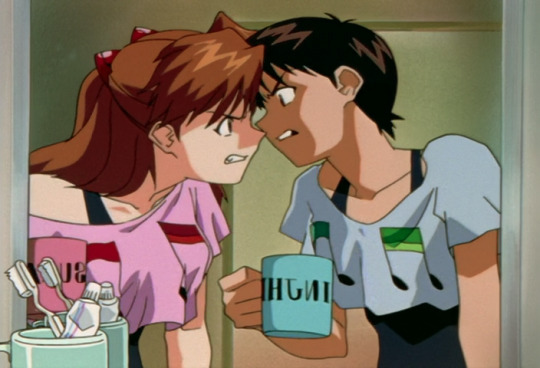
Then we have Kaworu, who although is only around for short while, provides us an example of a guy who doesn't seem to care for his or anyone else's sex-gender congruency. He requests to bathe with Shinji, invites him to sleep together, Shinji didn't even seem to understand how to respond to anything Kaworu did. There's less of a rhetorical point to be made here because honestly it really has to do with vibe you get from watching it play out. The lack of anyone trying to control anybody else's behavior was just kind of noticeable? (Also if they weren't going for Yaoi energy here, they failed miserably. It was "will they, won't they?" the entire time. Breaking News: Did research, it is true.)
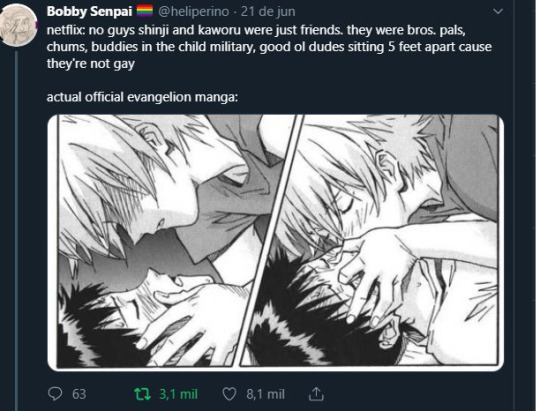
Anyway, this show definitely isn't for me, but I respect it for what it means to the wider anime audience.
7 notes
·
View notes
Text
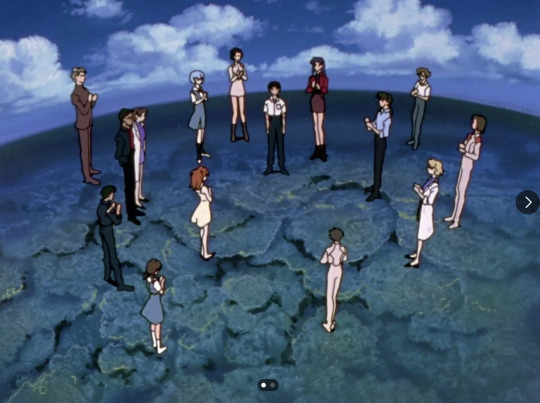
Blog
Neon Genesis Evangelion
Just finished watching Neon Genesis Evangelion, and I have to say, I really appreciate the complex and well-thought-out plot and character designs. However, I’m still quite confused about what actually happened, even after watching multiple plot analyses on YouTube. I think part of that confusion comes from skipping episodes as assigned by this class. As a result, many plot developments felt disjointed or unclear. For example, I wasn’t entirely sure who Kaworu was, how he came to be, or why his betrayal was so significant. On top of that, the ending left me unsure about what the series was ultimately trying to convey.
That said, even without fully understanding all the details and ambiguities, it’s clear that self-recognition and self-acceptance are major themes explored by the director. This also ties into the discussions we’ve had in class. Shinji stands out from other boys his age. He doesn’t display traditional or socially expected masculinity. He often expresses self-loathing, saying he’s not determined enough or too afraid to take responsibility. He apologizes frequently and seems desperate to please others.
Part of Shinji’s personality can be traced to his complicated relationship with his father. His father appears to be cold and cruel, abandoning him at a young age and later using him as a tool to pilot the EVA units. In the final episode, through long introspection and reflection, Shinji finally comes to accept himself. He develops his own understanding of what it means to be alive. He realizes that finding meaning requires effort and that life is a balance of trade-offs.
There’s a particular scene that stood out to me, where Shinji exists in a blank, campus-like space representing complete freedom. At first, he has nothing around him. It’s only when limitations, such as gravity and structure, are introduced that the space becomes more like the real world, and he’s able to form connections with others.
It seems that by the end, Shinji is able to thank his father because all the challenges he faced, however painful, shaped him into who he is. Those struggles allowed him to meet the people around him, to pilot the EVA, and ultimately to find meaning in his existence. Through that journey, he begins to form his identity.
0 notes
Text

SqampCon Blog Post
I attended SwampCon on Saturday afternoon with two of my friends, who are both much more invested in various anime than I am. I had heard about the convention since last year but never seriously considered attending. While I’ve watched a fair amount of anime (I'm all caught up with One Piece, almost finished with Naruto, and have explored many other genres), I’ve never been into cosplay or attended any conventions before, so I didn’t know what to expect. Due to my limited knowledge and interest, I was surprised, almost shocked, by how many passionate anime enthusiasts showed up. The convention was much larger than I had imagined.
Thinking about why I was so surprised by the size of the event, I came up with a few reasons.
First, I didn’t expect Japanese anime to have such a strong influence in the U.S., a country halfway across the globe that speaks a different language and practices a different culture. I’ve always known that many people around me are fans of anime, but since words like “weeb” are often used in a derogatory way toward those who are passionate about it, I didn’t expect so many fans to show up. It was great to see that no one at the convention was shy about their passion, and that everyone was openly embracing their interests.
Second, the amount of effort people put into their cosplay was impressive. Many attendees spent hours creating costumes to resemble their favorite characters. For example, I saw someone wearing a Five Nights at Freddy’s animatronic bear suit made from a hard material that seemed to require custom computer-aided design and manufacturing. It even had a built-in speaker that shouted lines from the game. While that character isn't from a Japanese anime, the same level of craftsmanship and attention to detail could be seen in the costumes of anime characters throughout the convention.
Third, I was amazed by the sheer number of vendors selling original fan art. There were three rooms full of local artists’ booths featuring stickers, paintings, plushies, and crocheted creations. Some of the items were so adorable that I couldn’t resist making a few purchases. I was really impressed by the dedication and creativity of the artists who made and sold merchandise based on the anime they love.
Attending SwampCon helped me better understand the distinction between official cultural capital and shadow cultural capital. Seeing people passionately create and share around anime helped me appreciate how deeply meaningful that form of cultural expression is. It gave me a new perspective on fandom and identity, and connected closely with many of the topics we've discussed in class.

1 note
·
View note